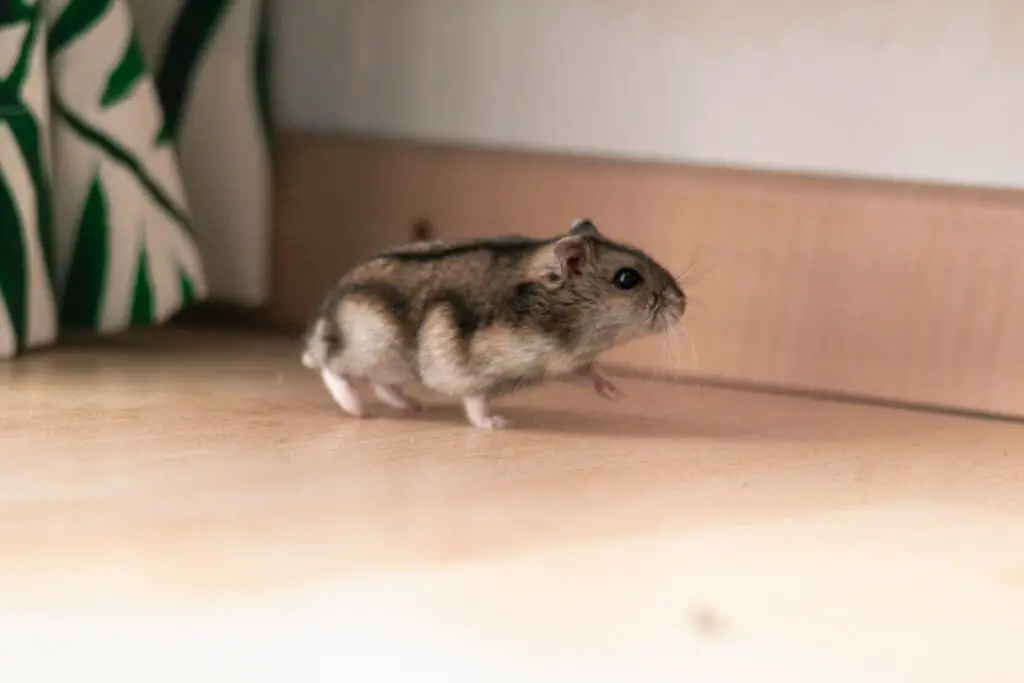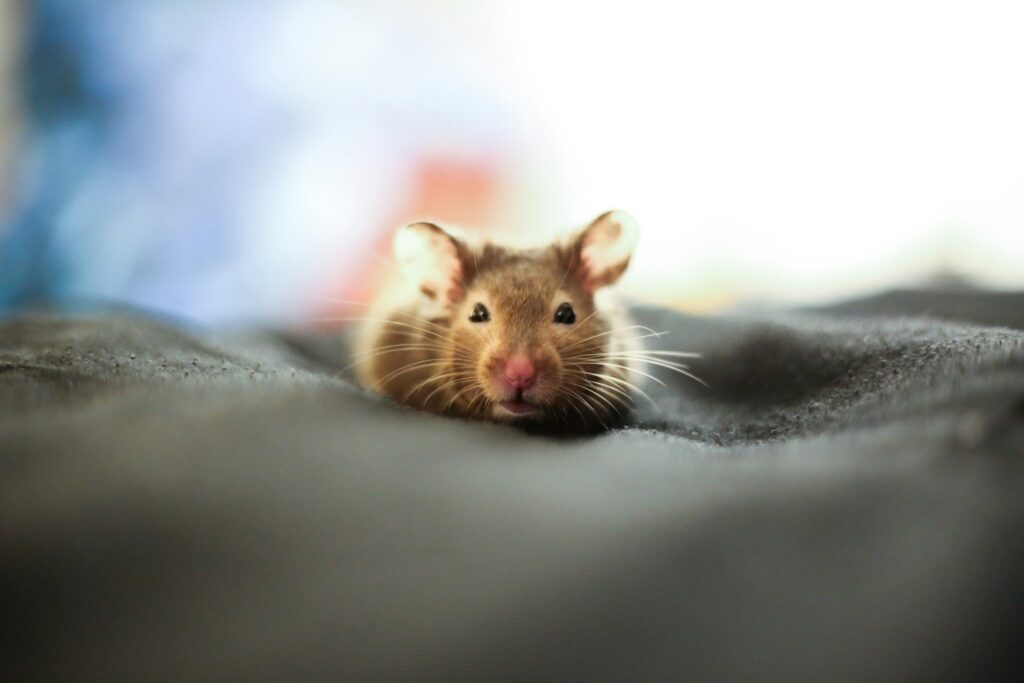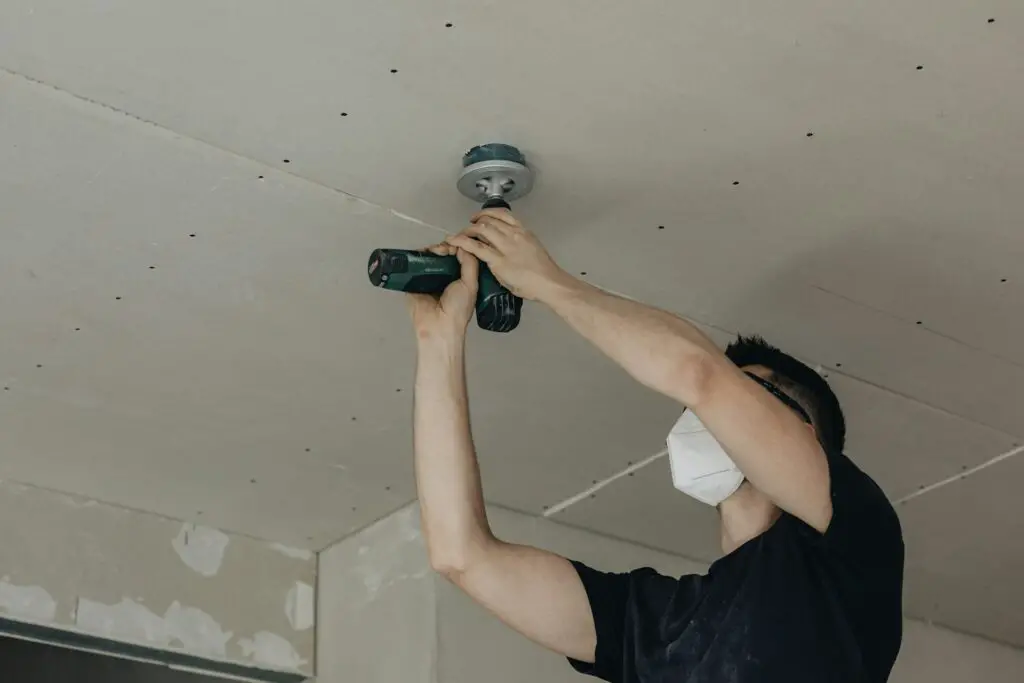Combatting mice in the ceiling without access can be challenging, but it’s not insurmountable. Start by setting traps at strategic locations and contacting a pest control company if the infestation persists. Store pet food and dry goods in glass or metal containers, and minimize nesting materials and clutter. Using storage bins can also help to keep potential nesting areas to a minimum.
Identifying Telltale Signs of Mouse Activity
Mouse droppings, odd pet behavior, and scratching sounds are clear indicators of rodent infestation. Set traps in areas where mice frequent and look out for shredded paper, which they may use for nesting. Mice nesting in the walls pose significant health and safety risks, including the spread of disease and potential damage to electrical wiring. The scratching and scurrying sounds coming from the walls are more than just a nuisance; they signal an urgent need for intervention.
Addressing a mouse infestation early is crucial to prevent these dangers from escalating. Professional pest control can offer solutions when traditional methods fail, especially when there is no direct access to the infested areas.

Preemptive Measures to Deter Mice Infestation
Preventing an infestation is key. Keep your home unattractive to rats and mice by eliminating food sources and sealing gaps that may serve as entry points.
Proper Sanitation to Discourage Rodent Presence
Maintaining cleanliness is vital for deterring rodents. Ensure that food waste is properly disposed of and surfaces are kept clean to not entice mice. Adequate sanitation reduces the chances of attracting these pests who are constantly in search of sustenance and shelter. Regularly declutter and organize your home to minimize potential hiding spots for mice. By keeping your space tidy and free of excess materials, you reduce the likelihood of a rodent making your home theirs.
The Importance of Regular Inspections for Prevention
Conducting regular inspections around your home can help detect early signs of a mouse problem. Look for any gaps or damage that might allow rodents to enter and address these promptly to prevent an infestation. Being vigilant and taking immediate action upon finding evidence of mice can save you from more extensive and expensive remedies down the line. Regular checks act as an effective preventive measure.
Sealing Entry Points: Your First Line of Defense
Sealing tiny holes is essential to deter mice, as they can squeeze through tiny gaps in windows and doors. Check these areas regularly and use appropriate materials to block their access.
Locating Possible Entry Points from Inside Your Home
Inside your home, inspect for tiny holes that mice could use to enter. Mice are adept at squeezing through tiny spaces, so it’s imperative to seal even the smallest of openings to deter mice. Pay particular attention to areas where utilities and pipes enter the home, as these can often provide easy access for rodents. Sealing these points can greatly reduce the likelihood of an infestation.
Utilizing Sealants and Steel Wool for Mouse-Proofing
When mouse-proofing your home, using the right materials is crucial. Steel wool is particularly effective at blocking entry points because mice cannot chew through it. Combine this with sealants designed to keep pests out for an even more robust barrier. Focus on areas that are prone to gaps, such as where different materials meet or where structures have settled over time. Regular maintenance of these barriers is also necessary to ensure their continued effectiveness.

Non-Invasive Removal Methods
Non-invasive methods, like ultrasonic devices and natural deterrents, can be used alongside traditional traps to reduce the mouse population without needing to access the ceiling.
Ultrasonic Pest Repellers: Fact vs. Fiction
Ultrasonic devices are marketed as a humane and non-invasive method to repel pests, including mice. These gadgets emit sounds at frequencies that are supposed to be uncomfortable for rodents, driving them away from the area. However, the effectiveness of ultrasonic pest repellers is a topic of debate. Some users report success, while others find them ineffective. Research and testing are key when considering this option for pest control.
The Role of Natural Repellents and Deterrents
Natural repellents can play a supportive role in deterring mice. Peppermint oil and cotton balls soaked in essential oils are commonly used to create a smell that mice find unpleasant. Similarly, fabric softener sheets and apple cider vinegar are touted as potential deterrents. While not a standalone solution, these natural remedies can supplement other methods and provide a more comprehensive approach to mouse control. It’s important to note that these should be part of a larger pest management strategy.
The Strategic Placement of Traps
For effective control, snap traps should be strategically placed in areas where mice in your walls or ceiling are likely to travel. Pest control companies can offer guidance on the best locations for trap placement.

Selecting the Right Type of Mouse Trap
Selecting the right type of mouse trap is crucial for effective management. Snap traps baited with peanut butter can effectively eliminate dead mice from crawl spaces and other hard-to-reach areas. Glue traps may also be used, but they should be placed carefully to avoid non-target animals. In cases of heavy infestation, a professional pest controller might be necessary to deploy traps for mice in the walls and evaluate the most effective method for your particular situation, considering all potential food sources.
Rodenticides with Caution: A Last Resort
While dealing with mice in your ceiling, it is crucial to use rodenticides with extreme caution, as these formulations contain deadly chemicals. Resorting to poisonous pellets should be a last resort, particularly because of potential risks to non-target animals and humans. Furthermore, some mice may be resistant to arsenic or anticoagulant poisons, which can make them a less effective solution. Always ensure that every mouse or two carries the risk of a wider infestation before deciding on this hazardous step.
Types of Chemical Baits and Their Application
In scenarios where rodent control is necessary, chemical baits can play a role. These baits often come in the form of food bait, which is laced with toxic substances designed to be taken back to the nest. Proper application is critical; bait stations should be strategically placed to target mouse populations without posing risks to other wildlife or pets. It is essential to follow manufacturer guidelines to ensure effective and safe usage.
Baits must be kept out of reach of children and non-target animals and used in a controlled manner to prevent accidental ingestion. Regular monitoring and replenishment of the bait stations are required to maintain control over the mouse populations. Remember, these methods should only be used when non-invasive measures have failed and where there is no direct access to the infested area.
When to Call the Professionals
If the severity of the infestation endangers your family’s health or the problem persists despite your efforts, it is time to call professional exterminators. These experts have the tools and knowledge to handle challenging infestations, especially when access to the affected area is limited or non-existent.
Professional extermination services offer thorough solutions that are beyond the reach of DIY efforts. These specialists are equipped with advanced rodent control techniques and can safely administer treatments that are more potent than over-the-counter options. With their expertise, they can quickly assess the severity of the infestation and develop a tailored plan to eradicate the pests from your home.
Moreover, professionals are trained to handle the associated risks, including the safe removal of dead rodents and contaminated materials. They can also offer guidance on preventing future infestations, ensuring that your home remains a rodent-free environment for the long term.
Post-Eradication: Ensuring Mice Stay Gone
After successful eradication, it’s crucial to maintain an environment where signs and destruction caused by rodents do not reoccur. Consistent cleaning and vigilance are key to ensuring that mouse droppings disappear for good. Regular checks for droppings or nests will help verify that your home remains mouse-free.
The Importance of Ongoing Maintenance and Monitoring
To deter mice from returning, ongoing maintenance and monitoring are imperative. This includes keeping food in sealed containers, maintaining a clean living space, and promptly addressing any signs of mice. By regularly inspecting your home for new entry points, you can take immediate action to seal them and reinforce existing barriers. Continual vigilance helps identify potential problems early, enabling you to respond quickly and prevent a full-blown infestation. It is essential to remain proactive and aware of the subtle signs that mice may be trying to make a comeback.
Reinforcement of Entry Points and Continual Vigilance
Reinforcing your home against future mouse intrusions involves sealing any gaps and cracks that could serve as entry points. Materials like steel wool and heavy-duty plastic can be used to block these gaps while maintaining a tidy home environment minimizing attractants that could lure new rodents. Regular inspections of vulnerable areas like light fixtures and attic spaces are necessary to detect any early signs of mice.
By staying alert for the signs of a mouse infestation, such as the presence of soft materials used for nests or the distinctive marks mice leave as they travel, homeowners can act swiftly to prevent rodents from living in the ceiling again. Consistent efforts in sealing off points of entry and monitoring for activity will help ensure the long-term safety and cleanliness of your living space.
Proper Cleanup of Mouse Contamination
Once you’ve managed to rid of mice, it’s essential to properly clean up any contamination left behind. This includes safely removing mouse droppings and nests. A thorough cleanup helps prevent the spread of diseases that rodents can carry.
Protective Measures for Handling Mouse Droppings
Handling mouse droppings requires caution. Protective gloves and a face mask should be worn to avoid direct contact and inhalation of hazardous particles. Using a plastic bag, carefully collect the droppings and dispose of them in the trash. For DIY mouse control enthusiasts, remember that safety comes first; never handle rodent waste with bare hands. After removing droppings, disinfect the area thoroughly. This may include washing surfaces with a strong disinfectant or using a spray bottle filled with a mixture of bleach and water. Ensuring that all contaminated areas are sanitized will help protect your family’s health and prevent any potential disease transmission.
Disinfection Techniques to Prevent Disease Transmission
Disinfection is a critical step in the process to rid of mice and their associated health risks. Pay special attention to hard-to-reach areas where droppings may have accumulated. Use disinfectants approved for killing bacteria and viruses that may be present, and always follow the recommended safety guidelines for use. Effective disinfection not only addresses visible contamination but also targets areas where mice may have traveled or nested. This comprehensive approach helps ensure that all potential sources of infection are neutralized, safeguarding your home against the diseases mice can carry.
The Long-Term Advantages of Effective Rodent Control
Effective rodent control offers numerous long-term benefits. By implementing mouse-repellent strategies and maintaining a clean, uninviting environment for pests, you can avoid the recurring headaches of mouse problems. This proactive approach not only repels mice but also reduces the likelihood of property damage and health risks associated with infestations.
Additionally, consistent rodent control efforts contribute to a more peaceful and hygienic home environment. With the right measures in place, including sealing entry points and using deterrents, the stress and costs associated with managing an infestation are significantly minimized. Ultimately, the investment in rodent control pays off with the comfort of knowing your home is protected against unwelcome guests.
Summarizing the War Against Ceiling Mice: Key Points to Remember
Combatting a family of mice in the ceiling requires a multifaceted approach. From recognizing the signs of mice, such as the odd pet behavior or sounds of activity, to trapping mice with strategically placed devices, each step is crucial. Utilize materials like hardware cloth to secure gaps and cracks, and ensure that areas, where mice mark their territory, are thoroughly cleaned. Regular inspections for droppings or evidence of nests, coupled with persistence in keeping your home clean and fortified, will help maintain a rodent-free space. By following these guidelines, you can protect your home from the damage and health risks these pests pose.


